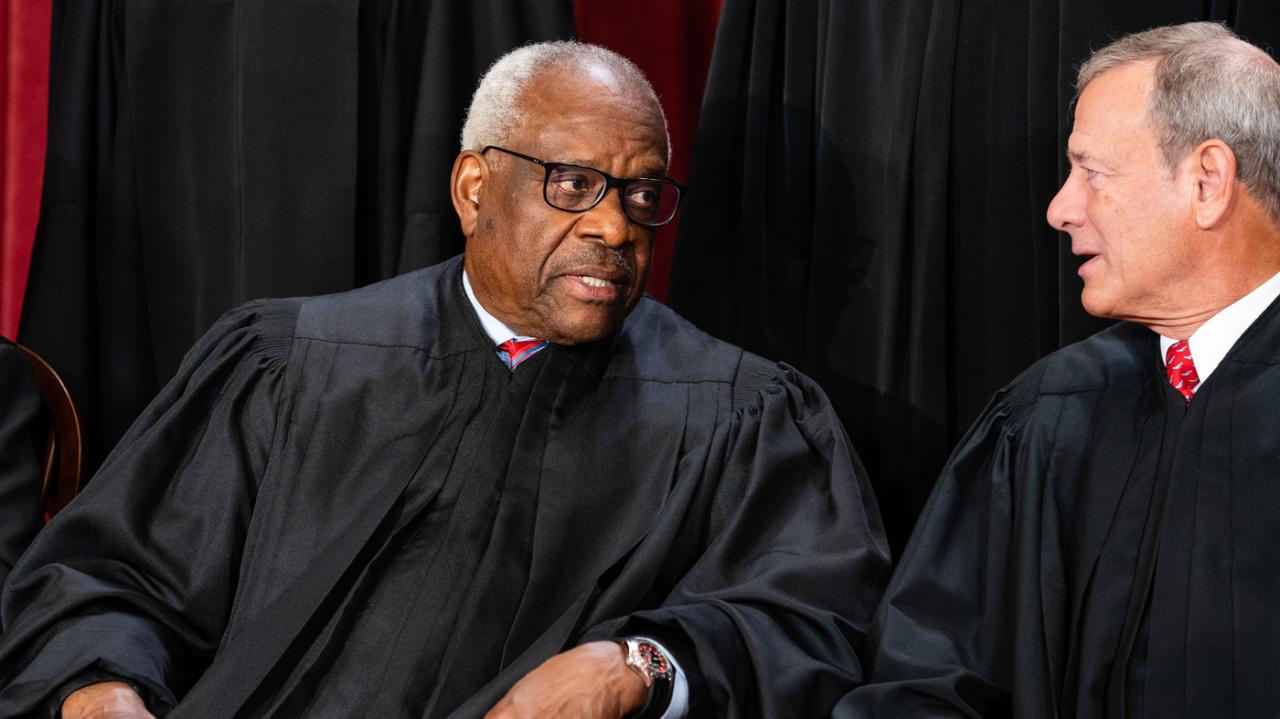Federal courts won’t refer Clarence Thomas for DOJ investigation – Federal Courts Reject Thomas DOJ Referral: The decision not to refer Supreme Court Justice Clarence Thomas for a Department of Justice investigation has sparked significant debate. This refusal, rooted in the separation of powers, raises crucial questions about accountability within the highest court and the balance between judicial independence and public trust. We’ll explore the legal arguments, ethical considerations, and potential long-term impacts of this controversial decision.
So, the Federal courts decided against referring Clarence Thomas for a DOJ investigation, which is a pretty big deal. It’s a stark contrast to how different countries are handling health crises; check out this article on how China and India are viewing the HMPV outbreak: China Calls HMPV Outbreak ‘Winter Occurrence’, India Says ‘Don’t. The differing responses highlight how varied approaches to significant events can be, much like the differing opinions surrounding the Thomas case.
The core issue revolves around allegations against Justice Thomas, focusing on whether his actions constitute ethical breaches warranting an external investigation. This article will examine the judicial branch’s role in such matters, the DOJ’s investigative authority and limitations, and the various perspectives on how best to address potential misconduct within the Supreme Court.
The Federal Courts’ Decision Regarding Justice Clarence Thomas: Federal Courts Won’t Refer Clarence Thomas For DOJ Investigation
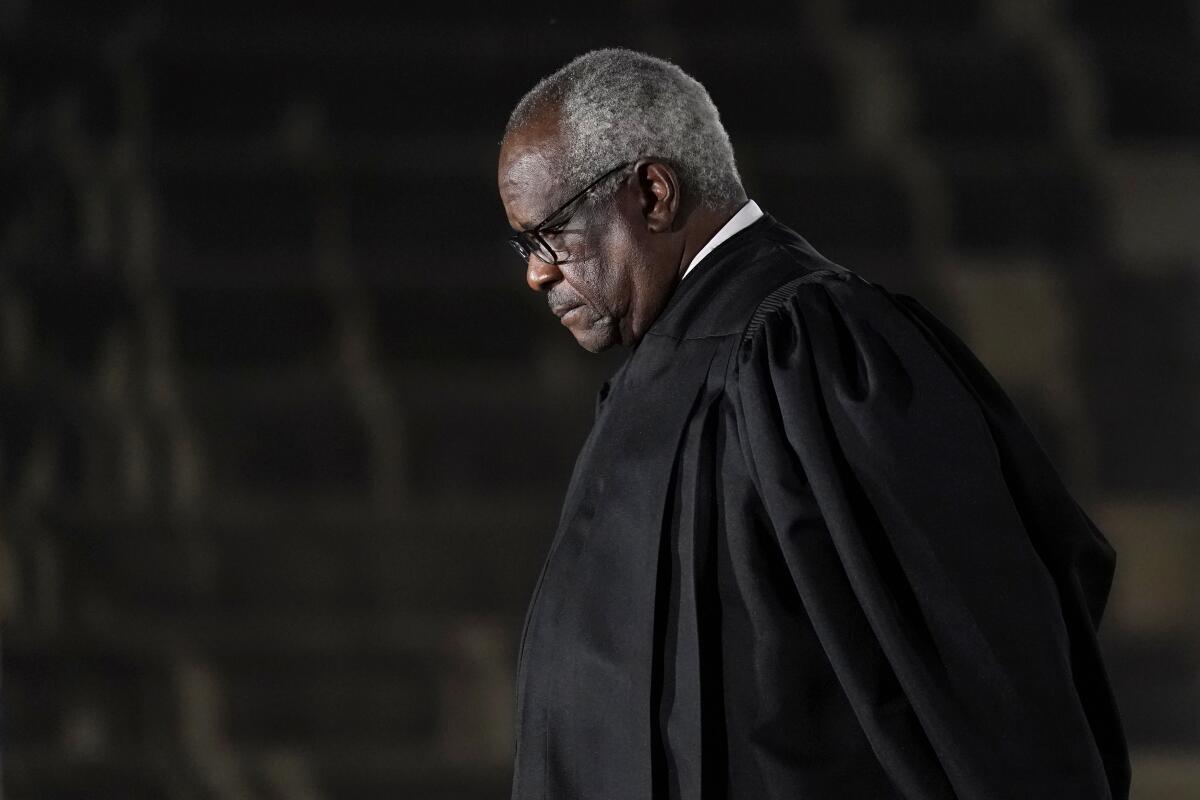
The decision by federal courts not to refer Justice Clarence Thomas for a Department of Justice (DOJ) investigation regarding alleged ethical breaches has sparked significant debate. This decision highlights the complex interplay between the judicial branch’s internal mechanisms for addressing ethical concerns and the executive branch’s investigative authority. This article will examine the key aspects of this situation, analyzing the roles of different branches of government, ethical considerations, and the potential impact on public trust in the Supreme Court.
The Judicial Branch’s Role in Investigations
The separation of powers doctrine, a cornerstone of the U.S. government, dictates that each branch—legislative, executive, and judicial—has distinct powers and responsibilities. This principle significantly influences how ethical breaches within the judiciary are handled. Historically, the Supreme Court has largely relied on self-regulation, with limited instances of external investigations. While there are internal mechanisms for addressing complaints, a lack of formal processes and transparency has been criticized.
Examples of internal judicial investigations are rare and often lack public transparency. Past instances of alleged misconduct involving Supreme Court justices have typically been handled internally, often resulting in private reprimands or informal resolutions. The lack of a formal, publicly accountable process has led to concerns about fairness and accountability. The current situation differs from past instances primarily in the level of public attention and scrutiny.
Previous cases often involved less publicized allegations and were handled with greater discretion, while the Thomas case has ignited a wider public conversation about judicial ethics and accountability.
The Department of Justice’s Investigative Authority, Federal courts won’t refer Clarence Thomas for DOJ investigation
The DOJ’s authority to investigate Supreme Court justices is limited. While the DOJ has broad investigative powers, the independence of the judiciary suggests a degree of restraint in investigating sitting justices. A DOJ investigation into a Supreme Court justice would carry significant political ramifications, potentially escalating partisan tensions and raising questions about the impartiality of the investigation itself. Ethical considerations for the DOJ in such a situation are paramount, requiring careful consideration of the potential impact on the judiciary’s independence and public perception of fairness.
Hypothetically, if the DOJ were to investigate Justice Thomas, the process might involve a preliminary review of available evidence, followed by the opening of a formal investigation if sufficient grounds exist. This could involve witness interviews, document reviews, and potential grand jury proceedings. However, the DOJ would likely need to proceed with extreme caution, mindful of the potential for accusations of political interference and the need to maintain the integrity of the judicial process.
Public Perception and Ethical Concerns
The allegations against Justice Thomas raise significant ethical concerns regarding transparency, conflicts of interest, and the appearance of impropriety. The central question is whether Justice Thomas’s failure to disclose gifts and travel from individuals with business before the Court undermined public trust in the impartiality of the Supreme Court.
| Argument For DOJ Investigation | Argument Against DOJ Investigation | Impact on Fairness | Impact on Public Trust |
|---|---|---|---|
| Ensures accountability and transparency. | Could undermine the independence of the judiciary. | Potentially fairer than internal investigation due to impartiality. | Could either increase or decrease depending on the outcome and perceived fairness. |
| Promotes public confidence in the integrity of the court. | Could be perceived as a politically motivated attack. | Depends on the objectivity and thoroughness of the investigation. | A perceived lack of investigation could severely damage public trust. |
| Provides a neutral and impartial investigation. | Could lead to further polarization and division. | A fair investigation is crucial to maintain confidence in the judiciary. | Transparency and perceived fairness are key to maintaining public trust. |
The decision not to refer Justice Thomas for a DOJ investigation could significantly impact public trust in the Supreme Court. Different interpretations of judicial ethics, particularly regarding the appropriate level of transparency and disclosure, will continue to influence public perception of the court’s legitimacy.
Alternative Mechanisms for Addressing Ethical Concerns
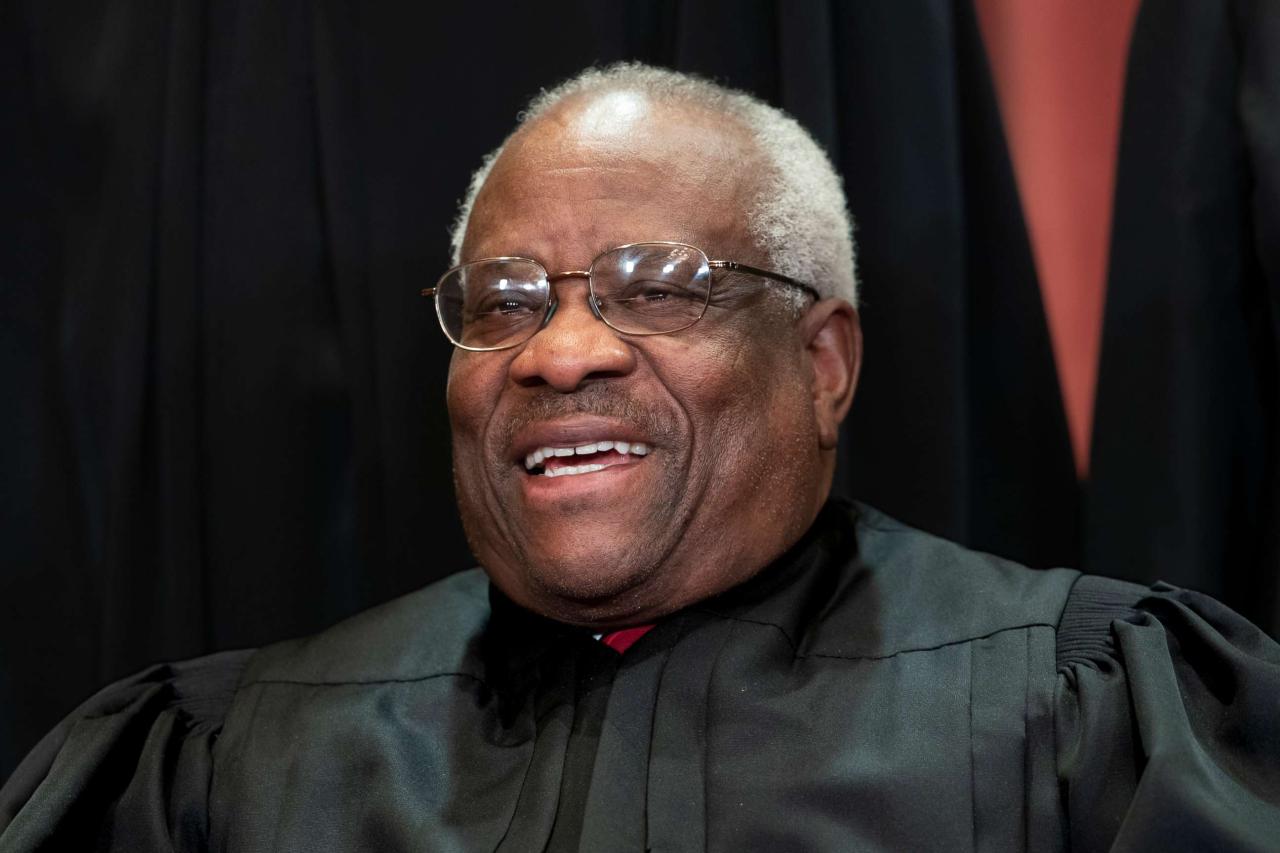
Several alternative mechanisms exist within the Supreme Court for addressing ethical concerns. These include internal review processes, the Court’s own code of conduct (though lacking specific enforcement mechanisms), and the potential for Congressional oversight. However, these methods often lack transparency and the power of a full-scale DOJ investigation. Each approach has varying levels of effectiveness, and the choice of mechanism significantly influences the outcome and public perception.
So, the Federal courts aren’t sending Clarence Thomas to the DOJ for investigation. It’s a pretty big deal, and honestly, makes you wonder about other things happening globally. For example, check out this article about a concerning new development: What is HMVP virus, Chinas recent ‘Covid-like outbreak’, should – it’s a whole different kind of situation, but both events highlight the importance of transparency and accountability in powerful institutions.
The Thomas case, therefore, raises questions about similar potential oversight failures elsewhere.
Compared to a DOJ investigation, internal mechanisms are generally less transparent and may be perceived as less impartial. Congressional oversight, while potentially effective in bringing attention to issues, may be viewed as overly political. The optimal approach requires balancing the need for accountability with the preservation of judicial independence.
The Impact on the Supreme Court’s Legitimacy
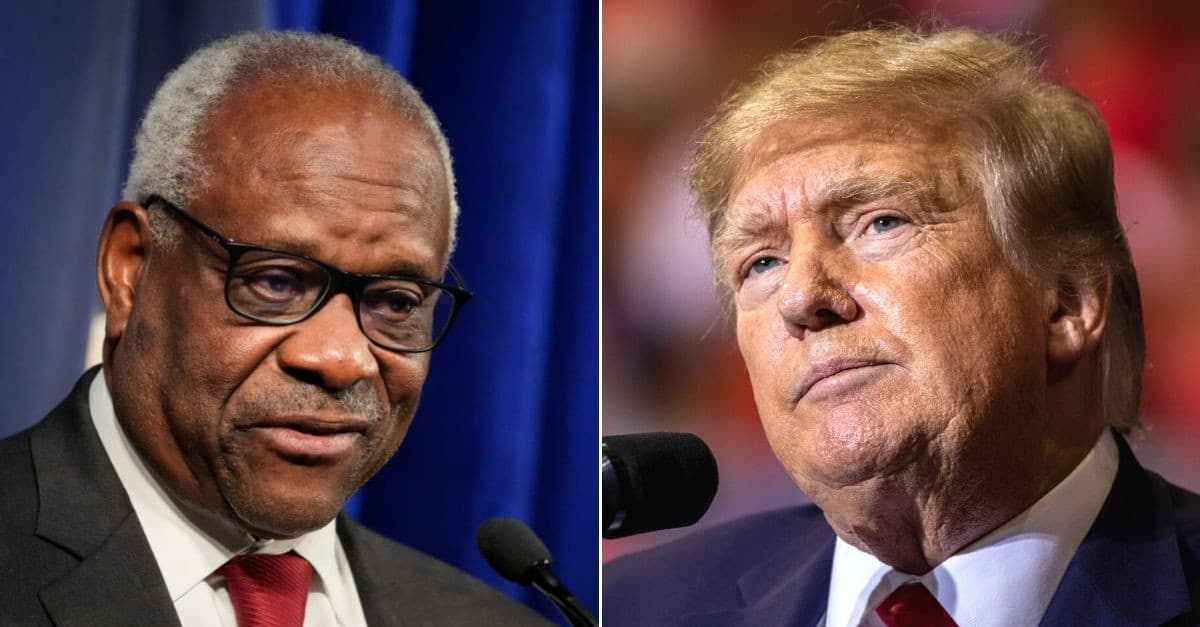
The long-term impact of the decision not to refer Justice Thomas for investigation on the Supreme Court’s legitimacy and public perception remains to be seen. Arguments for and against the Supreme Court’s self-regulation center on the tension between independence and accountability. Historical examples, such as past controversies involving Supreme Court justices, illustrate the challenges of balancing these competing concerns.
Potential future scenarios resulting from the decision not to refer Justice Thomas include continued public skepticism, calls for reform of the Court’s ethical guidelines, and increased scrutiny of future judicial appointments. The lack of a thorough, external investigation may further erode public trust, leading to questions about the Court’s ability to govern itself effectively and maintain its legitimacy in the eyes of the American public.
Final Wrap-Up
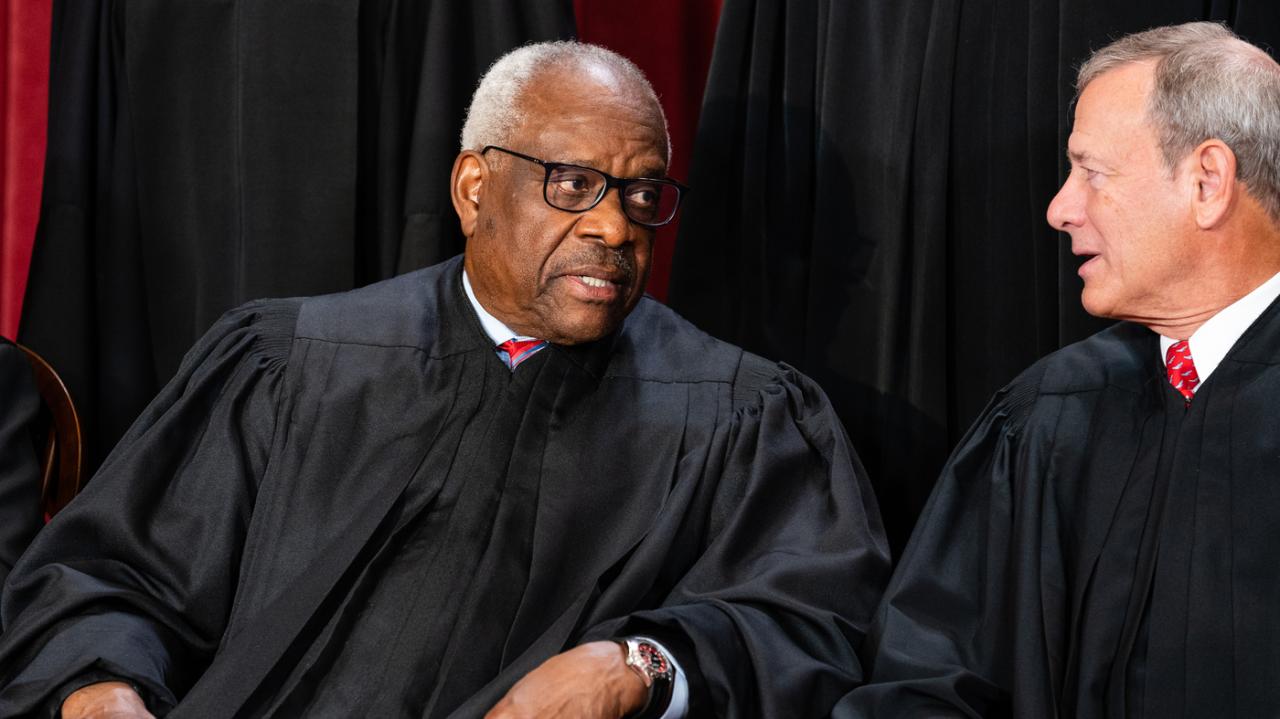
The refusal to refer Justice Clarence Thomas for a DOJ investigation leaves a lingering question mark over the Supreme Court’s ability to self-regulate effectively. While upholding judicial independence is vital, maintaining public trust demands transparency and accountability. The long-term implications of this decision remain uncertain, potentially impacting the Court’s legitimacy and the public’s faith in its impartiality. The debate over alternative mechanisms for addressing ethical concerns within the judiciary will undoubtedly continue.
FAQ Compilation
What specific allegations were made against Justice Thomas?
The specific allegations against Justice Thomas vary, and details are complex. Generally, they involve concerns about his financial disclosures and potential conflicts of interest.
What are the potential consequences of not investigating?
So, the news about the Federal courts not referring Clarence Thomas for a DOJ investigation is pretty wild, right? It makes you think about career stability – maybe you should check out the full stack developer salary expectations and job outlook to see if that’s a more predictable path. Regardless of the Thomas situation, a secure future is always a good thing to plan for.
Failing to investigate could erode public trust in the Supreme Court, potentially leading to decreased legitimacy and calls for reform. It might also embolden future justices to act similarly.
Could the Supreme Court itself investigate Justice Thomas?
The Supreme Court has internal mechanisms for addressing ethical concerns, but their effectiveness and impartiality are debated. A self-investigation might be seen as lacking objectivity.
What other avenues for accountability exist?
Congressional oversight, ethics committees, and public pressure are all potential avenues for accountability, though their effectiveness varies.
